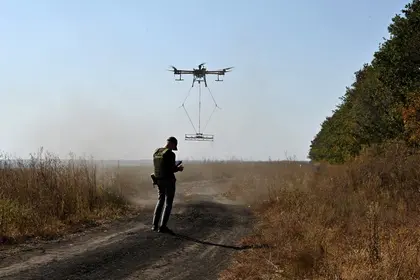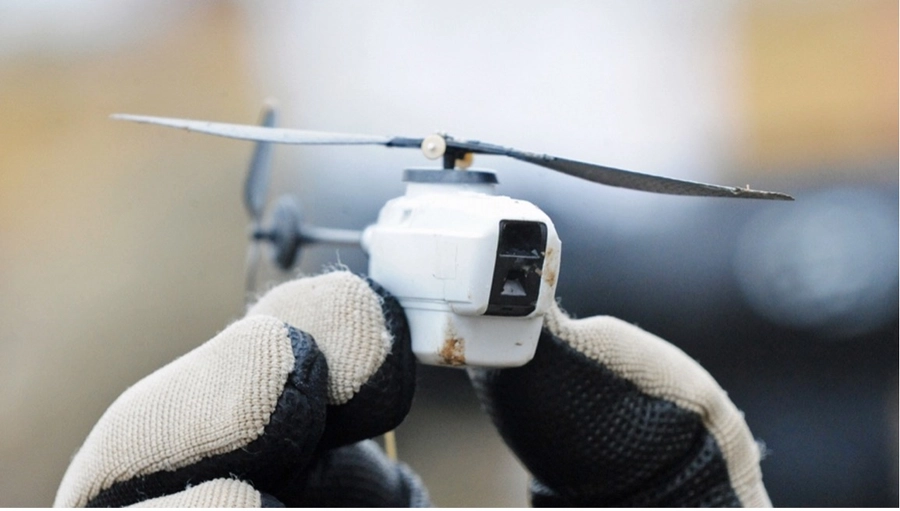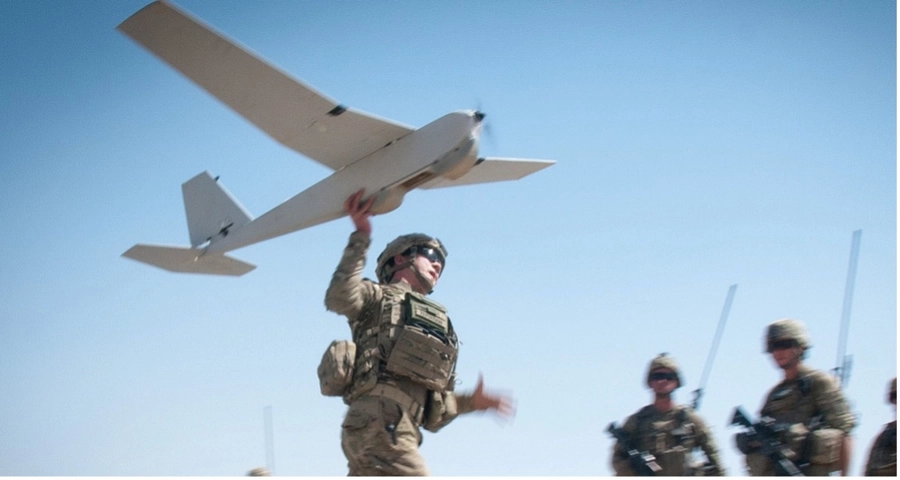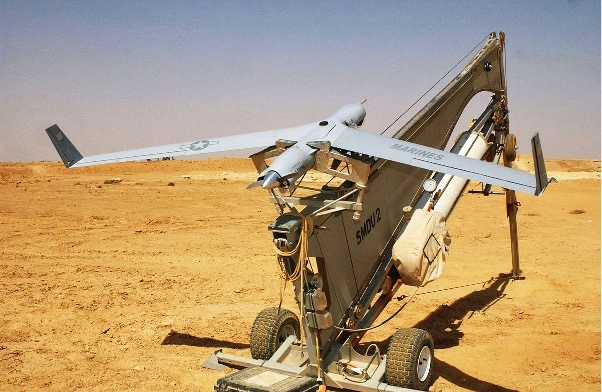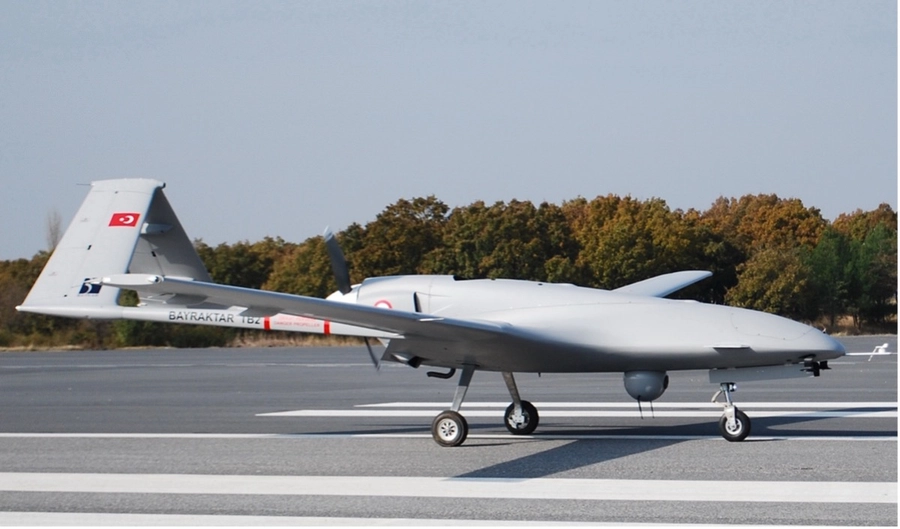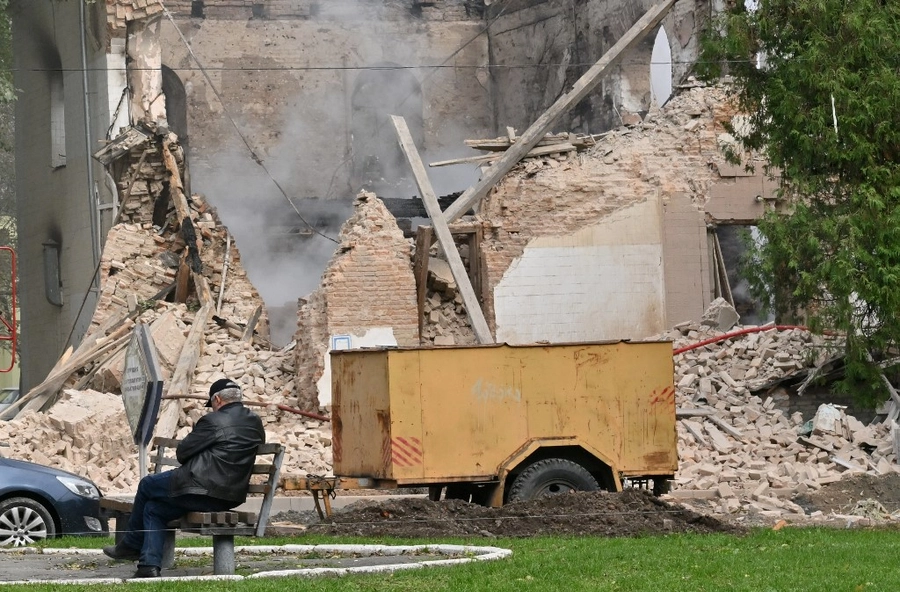The successful use of unmanned aerial vehicles (UAV), or drones, by the US as both a surveillance and remote attack platform in Afghanistan and Iraq led all military experts to the conclusion that they were the future of warfare.
The research and development departments of the world's defense companies then became obsessed with studying all the possible different uses for drones on the battlefields.
JOIN US ON TELEGRAM
Follow our coverage of the war on the @Kyivpost_official.
In June 2017 the European Commission included an additional $1.7 billion in its annual budgets to support industry in the development of the technology.
Even so the explosion of drone warfare in Ukraine took everyone by surprise, no pun intended.
The Institute of Electrical and Electronics Engineer (IEEE) said in article on drones in its in-house “Spectrum” magazine in May 2023: “Like fighter planes, military drones started cheap, then got expensive. Unlike the fighters, though, they got cheap again.”
Categorization of drones
For the purist, drones are broken down into four main types which are in turn broken down by size, weight and range/endurance which in turn gives an indication of their use.
For the purposes of this article the types are broken down in a more simplified way. After that we will show how Ukraine has adapted both the concept of how to use drones and how to modify them from their original designed use.
Micro/nano drones
Insect-sized surveillance drones such as the Norwegian Black Hornet which can hover for up to 25 minutes and send images up to 1.6 kilometers via data using day or night vision and infra-red.
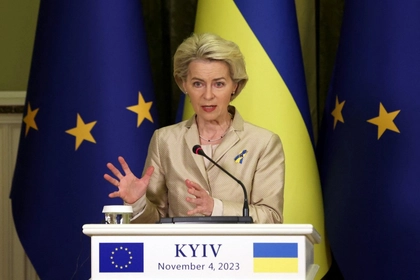
EU Transfers €1.5 Bln Raised From Russian Assets for Ukraine
These can be carried in a pocket or in a pouch on a soldier’s load carrying equipment.
A Black Hornet Drone PHOTO: Wikicommons
Small tactical drones
If greater surveillance coverage is needed a larger drone is needed, one that can be launched quickly by hand. An example is the AeroVironment RQ-20 “Puma,” a US-designed battery-powered, and hand-launched UAV, with the primary mission of surveillance and intelligence gathering using an electro-optical, infrared camera.
Puma drones were included in the $300 million military aid package to Ukraine provided by the US in April 2022. The drone can be both controlled by drone pilots or fly on a pre-programmed route.
The drone has a range of 15 kilometers and a flight endurance of two hours.
US forces launch a RQ-20 Puma UAV. PHOTO: US army PR
Medium-sized reconnaissance drones
The vast majority of conventional military drones, the "work horses," are medium-sized, medium-range aircraft used for longer-range surveillance.
An example is the Boeing ScanEagle a long-endurance, low-altitude unmanned aerial vehicle built by Insitu, a subsidiary of Boeing, and is used for reconnaissance.
ScanEagle is launched using the “SuperWedge” pneumatic launcher. It carries a stabilized electro-optical infrared camera on a lightweight stabilized turret system.
It has a range of over 100 kilometers with a flight endurance of over 20 hours. 15 ScanEagles were included in the $775 million US military weapons aid package provided to Ukraine in August, 2022.
A ScanEagle UAV on SuperWedge launcher. PHOTO: Wikicommons
Large combat and surveillance drones
The US Predator Reaper UAV, made by the US firm General Atomics, are the most well-known military drones. They are so-called Medium Altitude Long Endurance (MALE) drones which are operated from US soil by pilots via a satellite link-up.
The drones can be armed with various air-to-surface missiles, as well as laser-guided bombs and have a range of over a thousand kilometers with a flight endurance time of around 14 hours.
The nearest Ukrainian equivalent was the Turkish-made Bayraktar TB2, which was originally seen as a game-changer for Ukraine's armed forces as videos showed them destroying Russian equipment in the early days of the war in Ukraine.
As the war became more static and Russian air defenses were established in occupied areas, the drones became increasingly vulnerable and are now largely used for long-distance reconnaissance.
Turkish Bayraktar TB2 UAV. PHOTO: WIkicommons
Russian forces have used the Kronshtadt Orion which looks like a smaller, slimmer version of the Reaper combat drone.
Orions carried out several strikes against Ukrainian vehicles in the weeks after the February invasion but, like the Bayraktar was vulnerable to air defense and, after a number were shot down in April 2022 have not played a significant role in the war.
Kamikaze Drones
Kamikaze drones, also known as loitering munitions or suicide drones are attack drones designed to attack a target simply by crashing into it. They can vary in sophistication and capability.
Those most commonly encountered in Ukraine are the Iranian-designed Shahed-136/Geran 2 which is simply a UAV fitted with an explosive warhead used by the Russian military to attack infrastructure in Ukraine.
A building destroyed by a Shahed drone in Bila Tserkva, southwest of Kyiv, on October 5, 2022. PHOTO: AFP
Purpose-built munitions have more elaborate in flight and control capabilities, warhead size and design, and onboard sensors for locating targets.
They can be semi-autonomous or operator controlled to locate and identify targets such as the Russian Lancet which is operated remotely, controlled in real time by a communications system and equipped with an electro-optical camera whose images are received by the command-and-control station.
Hobbyist and FPV Drones
Due to the high demand for drones on the front line, improvised solutions also began to appear in Ukraine's war against Russia.
Hobbyist drones have found their way from the civilian market to the battlefield. These are often used by the military to monitor enemy movements and coordinate artillery strikes.
Ukrainian soldiers have used off the shelf commercial quadcopters, such as the Chinese DJI Mavic 3, to which they have strapped explosives to carry out attacks either in a suicide mode or to drop munitions such as grenades or mortar bombs onto the target.
First-person view (FPV) drones are also used extensively by the armed forces due to their nimbleness and low cost. These are often DIY drones that can carry explosives and strike high-value equipment such as light armored vehicles.
Army of Drones
In mid-2022 Ukraine’s Deputy Prime Minister, Minister of Digital Transformation Mykhailo Fedorov launched the Army of Drones project which aimed to raise funds through President Zelensky’s UNITED24 fundraising platform to buy drones and train up to 10,000 operators. By May $325 million had been raised.
The Ukrainian military is beginning to design and field larger, more capable Ukrainian drones designed and manufactured in-house under the “Army of Drones” concept such as the RAM II - Ukrainian kamikaze drone.
Ukraine has also received a number of Switchblade 300 and 600 loitering munitions from the US.
The entire Switchblade system can be carried in a backpack, it is deployed from a mortar-like tube that throws it into the air before its wings open and its propeller comes to life. It uses a live video feed to direct it onto targets.
The 300 has a range of up to 10 kilometers and a grenade-sized warhead which is capable of damaging unarmored vehicles while its big brother has a Javelin 8.4-kilogram anti-tank warhead and a range of 40 kilometers.
As the importance of drones used by both sides in the conflict has grown so has the search for countermeasures particularly using electronic devices to jam control systems and onboard GPS or other electronics.
The next stage will be to design countermeasures to the countermeasures – the fight goes on.
You can also highlight the text and press Ctrl + Enter


